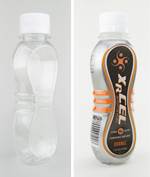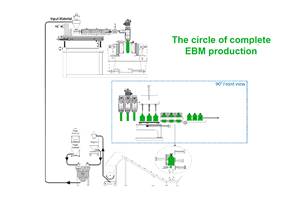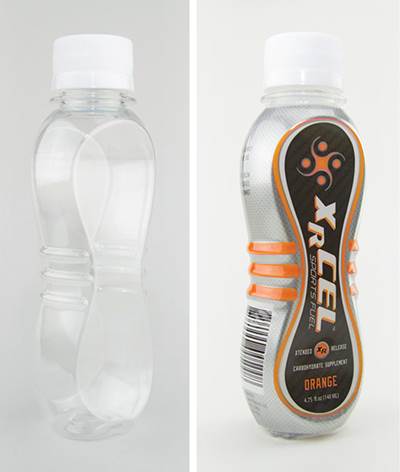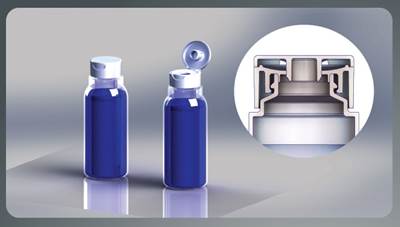Custom Molder Pivots When States Squelch Thriving Single-Use Bottle Business
Currier Plastics had a major stake in small hotel amenity bottles until state legislators banned them. Here’s how Currier adapted to that challenge.

Single-use plastics bans forced hotel amenity bottles to evolve from small sizes to larger, reusable or multiuse, wall-mounted versions. Source: Currier Plastics
What happens when you’ve made large investments to become the North American leader in a plastic bottle market and then state governments wipe away that business with the stroke of a pen? That was not an academic question for Currier Plastics, a midsize injection and blow molder in upstate Auburn, New York, when its position in small hotel amenity bottles for products such as shampoos and lotions was threatened by state crackdowns on single-use plastic packaging.
“We had a pretty substantial involvement in that sector,” says Ron Ringleben, Currier’s vice president of business development. “We had more than two decades’ relationships with three of the major hotel amenities supply companies in North America. We believe we had a 65% share of custom bottles and caps for these single-use personal-care packages. Five to six years ago, that was 35% of our overall business.”
Those hotel amenity bottles were typically 1.5 to 3 ounces in size, with 60% of them being extrusion blow molded (EBM) HDPE and 40% being injection stretch-blow molded (ISBM) PET. At the peak of Currier’s involvement in 2018-2019, its production of these bottles and caps exceeded 1 billion parts per year.
Currier went from 35% of its business in hotel amenity bottles down to 5-7%.
To acquire its dominant market position, Currier invested more than $15 million in equipment, including five Aoki single-stage ISBM presses and multiple EBM machines, including one large Kautex extrusion shuttle. “In 2015, that was the first all-electric shuttle in North America,” Ringleben says. “It has 12 parison heads and 24 cavities, able to mold a couple hundred million bottles a year on one machine.” The EBM machines produce single-and dual-layer HDPE bottles in eight to 24 cavities.
At the apex of Currier’s small amenity bottle production in 2018-2019, market changes were already afoot, Ringleben recalls. “We recognized that we had too high a share of our business tied to one market, and it was one that wasn’t showing much growth, since the hotel business was saturated.”
Then came rumblings from state legislators against single-use plastics. According to Ringleben, “In 2019, just before COVID struck, a lot of our hotel supply customers approached us about upcoming legislation against these bottles. They talked about going to larger bottles.”
California’s Santa Cruz County passed the first such ban in 2018, outlawing single-use plastic hotel amenity bottles smaller than 12 ounces by the end of 2020. The entire state of California followed suit in 2019 with a ban that took effect in 2023, covering single-use toiletry bottles of less than 6 ounces. Washington state also passed a bill last year to eliminate single-use plastic toiletry bottles by Jan. 1, 2027, for hotels with 50 or more units and by Jan. 1, 2028, for smaller establishments. New York state passed such a measure in July 2024, to take effect Jan. 1, 2025, prohibiting “hospitality care” bottles in sizes under 12 ounces and applying to hotels with more than 50 rooms. Other states are said to be weighing similar moves.
The Big Pivot
Following its customers’ lead, Currier Plastics transitioned to blowing larger wall-mounted hotel amenity bottles in sizes from nine to 15 ounces. Ringleben explains, “These are not single-use. Some are refillable and others stay on the wall in the shower for weeks.” All of these larger amenity bottles are extrusion blown HDPE. Ringleben notes that some competitors offer stock rounds in PET. “But stock is not our niche,” Ringleben says, “we specialize in custom containers.” For example, these larger HDPE amenity bottles may incorporate special features such as view stripes or use of soft-touch materials. And all of them contain some level of postconsumer reclaim (PCR), as much as 35-50%, which is more than was the case in smaller amenity bottles.
The transition to larger, reusable hotel amenity bottles has cut into Currier’s cap injection molding business. Caps for small amenity bottles were molded in eight to 64 cavities. Ringleben notes that today’s larger amenity bottles have pumps, some of which are imported.
Says Ringleben, “Starting in 2017, our strategy has been to leverage our expertise in high-volume injection and blow molding into health care markets like in vitro diagnostics, life science and others that require custom design, precise specification and medical-grade processes. We upgraded our quality system to a medical-conforming ISO 13485, hired medical-experienced engineers and built ISO Class 8 cleanroom space.”

Currier shifted its business strategy toward medical, healthcare and life sciences containers.
Source: Currier Plastics
Currier still serves some lingering demand for smaller amenity bottles, but Ringleben expects this to be only short term. Last year was a watershed in the transformation from small to larger bottles. Toward the end of the first quarter of 2023, small hotel amenities dropped by 65% from the previous year. Without Currier’s diversification strategy, that market cratering would have been devastating for the company. Instead of hundreds of millions of parts, volumes of amenities shrank to the tens of millions. Today, Currier serves the same three hotel amenities providers with less than 100 million bottles and caps.
“We’ve transformed our business model. We repurposed most of the assets that were once used for hotel amenities, which now constitute only 5-7% of our business, into health care. We’re an industry leader now in diagnostic reagent containers in PET and HDPE. In vitro diagnostics is big for us. These products have up to a 20-year life cycle and are highly customized, which suits our capabilities.”
Last year, Currier opened a second plant in Auburn, with its second Class 8 clean room and the company’s first injection-blow molding capacity. Notes Ringleben, “We are one of the few companies worldwide to offer extrusion blow molding, injection blow molding, and injection stretch-blow molding in ISO Class 8 clean rooms. That’s part of our value proposition.”
“We’ve transformed our business model to diversify from hotel amenities into health care.”
Currier still has open capacity on four to five of its eight Aoki machines’ ISBM PET capacity but is looking toward growth in medical to take up the slack. Ringleben notes that Currier has a couple of PET health care applications, including one for reusable hydration containers, and some food and beverage packaging in PET as well. Overall, health care now accounts for more than 50% of Currier’s $60 million sales, and the company is pushing to elevate that share to 75%.
Related Content
Foam-Core Multilayer Blow Molding: How It’s Done
Learn here how to take advantage of new lightweighting and recycle utilization opportunities in consumer packaging, thanks to a collaboration of leaders in microcellular foaming and multilayer head design.
Read MoreUS Merchants Makes its Mark in Injection Molding
In less than a decade in injection molding, US Merchants has acquired hundreds of machines spread across facilities in California, Texas, Virginia and Arizona, with even more growth coming.
Read MoreMultilayer Solutions to Challenges in Blow Molding with PCR
For extrusion blow molders, challenges of price and availability of postconsumer recycled resins can be addressed with a variety of multilayer technologies, which also offer solutions to issues with color, processability, mechanical properties and chemical migration in PCR materials.
Read MoreGet Color Changes Right In Extrusion Blow Molding
Follow these best practices to minimize loss of time, material and labor during color changes in molding containers from bottles to jerrycans. The authors explore what this means for each step of the process, from raw-material infeed to handling and reprocessing tails and trim.
Read MoreRead Next
How Currier Puts the ‘Custom’ In Custom Blow Molding
The three key ingredients are responsiveness, full-service product development, and control over both the bottle and the cap.
Read MoreAs Currier Grows in Medical Consumables, Blow Molding Is Its ‘Foot in the Door’
Currier Plastics has added substantial capacity recently in both injection and blow molding for medical/pharmaceutical products, including several machines to occupy a new, large clean room.
Read MoreTwo Molders Investing in Medical Market
Currier Plastics and NPI/Medical invest in clean rooms; molding and blow molding machines; testing equipment and more.
Read More






















